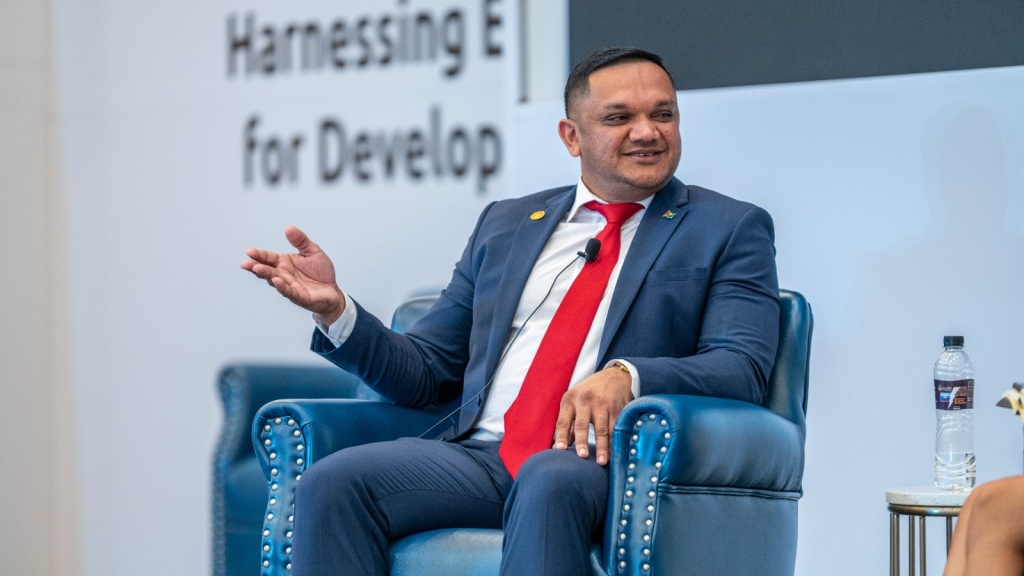Guyana declines Trinidad’s offer to refine its crude oil

Guyana on Wednesday said it is prepared to build its own refinery less than 24 hours after Trinidad and Tobago said it is prepared to assist Caribbean Community (CARICOM) countries to further develop their oil and gas industries.
Port of Spain had also said it had taken a deliberate policy to engage its regional neighbours in the development of economic cooperation in the energy sector.
Prime Minister Dr Keith Rowley, addressing the opening of Guyana’s International Energy Conference and Expo, told more than 1,200 delegates yesterday that crude oil which was once seen as being at the margins of the region has become a focal point with major discoveries in Guyana, Suriname, French Guyana, Belize and Trinidad and Tobago.
“In today’s economic environment, however, investments in enabling infrastructure and technology can be costly even to the point of being prohibitive. Trinidad and Tobago has the energy infrastructure to monetize hydrocarbon resources produced by its Caribbean neighbours.”
Rowley said Trinidad and Tobago possesses 10 ammonia plants, seven methanol plants, four LNG plants, an iron and steel complex which at peak performance utilized as feedstock four bcf of natural gas per day and an oil refinery which processed up to 140,000 barrels of oil per day.
He said Trinidad and Tobago’s current natural gas production averages 2.8 bcf per day and the country is still exploring the market for a user for the oil refinery.
“Trinidad and Tobago therefore provides a viable option for those countries that wish to optimize the monetization of their hydrocarbon resources without incurring substantial capital expenditure,” he added.
But Natural Resources Minister, Vickram Bharrat, said the Irfaan Ali administration is keen on building its own refinery.
“We’re looking to build our own refinery in country,” he told reporters, adding, “we are trying to ensure that we are self-sufficient in terms of energy so that’s why we are moving towards setting up the refinery in country”.
Bharrat told the pro-government News Room publication that the government has already issued a Request for Proposals for a privately-owned 30,000-barrel-per-day oil refinery in East Berbice- Corentyne and that the administration would soon be making a decision from the nine proposals received.
Bharrat said Guyana currently needs about 15,000 barrels of oil per day and with growing energy demand, it is believed that this 30,000-barrel-per-day refinery will suffice.
Bharrat said Guyana is keen on advancing natural gas cooperation with Trinidad and Tobago and Suriname, with the aim of monetizing that resource as well.
“Trinidad has the experience and the expertise as well too and quite honestly, we haven’t been focusing too much on gas.
“We have spent a lot of our time on oil, rightly so, because of the price of oil (but) because of the way the world is going, the demand for oil might not be long lasting but gas is seen as a transitional fuel,” Bharrat added.
Meanwhile, in his address to the conference on Wednesday, Bharrat told delegates that the Environmental Protection Agency (EPA) is establishing a system for real-time monitoring of the country’s forests in a similar manner to the way the government currently monitors oil and gas activities offshore.
He said the EPA initiative will complement the work done by the Guyana Geology and Mines Commission (GGMC) and the Guyana Forestry Commission (GFC).
“The GFC and the GGMC combined, we have over 50 stations in the interior, manned by forest and mining officers. Added to that, we have the compliance department and over 50 wardens. And they have two stations. In total, we have over 500 officers at different interior locations where there is heavy mining and forestry activities concentrated.”
Bharrat said that Vice President Bharrat Jagdeo would have mentioned monitoring, reporting and verification system (MRVS), saying that it “has been helping us to monitor our forest coverage.
“The EPA has a new system that will come on board very soon. We’ve already started it offshore Guyana, but we’ll start using it in our forests too,” Bharrat said noting that even now the government is able to monitor offshore oil and gas activities remotely.
“We’re shifting it to our forests and mining activities, besides from our capabilities on the ground. Because at some point we have to move towards the use of technology. We haven’t been doing that too much.
“In terms of forestry, it’s basically easy to monitor forest activities. I often say to loggers and anyone who asks the question, it’s not every day you will see a man with a log on his back running around or trying to hide from us,” Bharrat told the conference.





